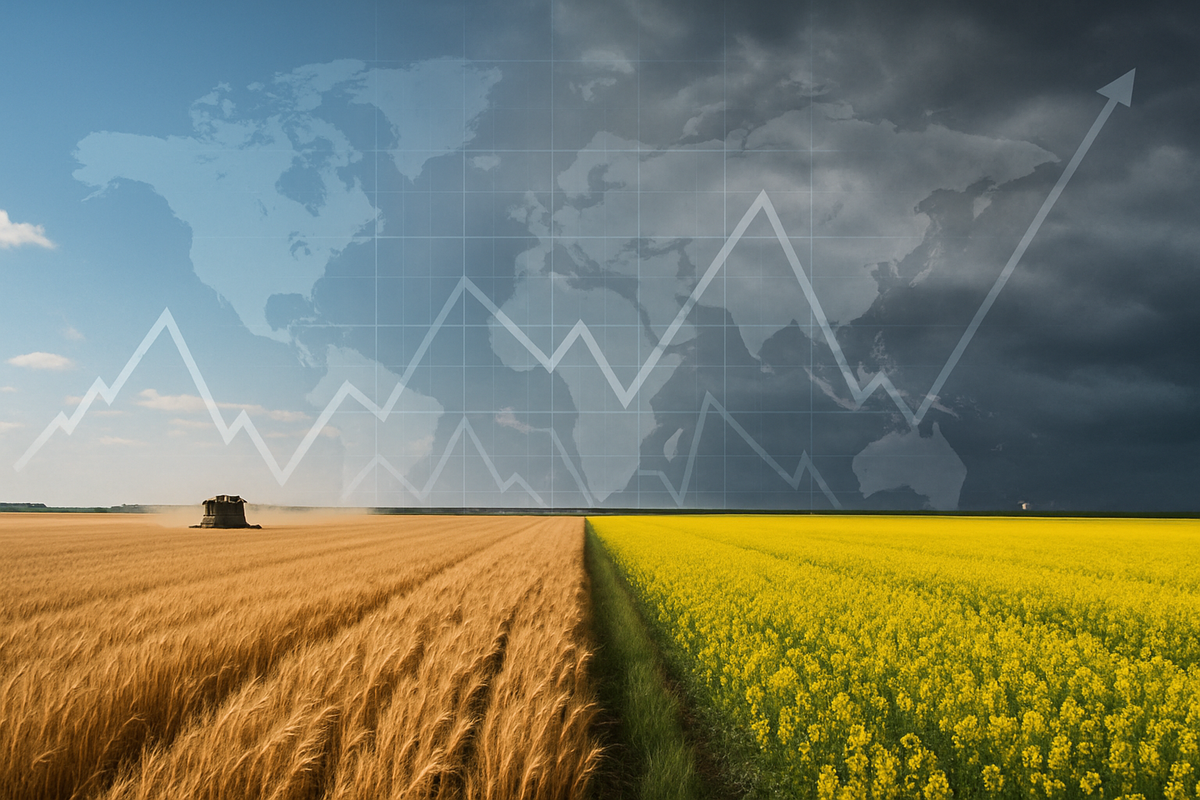
As the global agricultural calendar marks October 10, 2025, commodity markets are navigating a complex interplay of harvest realities, evolving weather patterns, and persistent geopolitical tensions. For key staples like canola and wheat, this day represents a critical juncture where the culmination of the northern hemisphere's growing season meets the dynamic forces of global supply and demand. While specific closing prices for this future date remain unquantifiable, the underlying currents shaping these markets offer a compelling narrative for producers, traders, and consumers alike. The immediate implications point to a market grappling with ample supplies in some regions offset by demand uncertainties and the ever-present shadow of international trade disputes.
Detailed Market Dynamics on October 10, 2025
The agricultural landscape on October 10, 2025, is defined by the advanced stages of harvest for many vital crops. In Canada, the canola harvest is largely complete across the Prairies, with reports indicating robust yields in regions like Saskatchewan, potentially contributing to a significant supply. This influx of new crop typically creates initial selling pressure, but as farmer selling subsides, market attention shifts to storage capacity and export demand. Similarly, the harvest of spring wheat and winter wheat in major producing areas is well underway, adding to global inventories. However, weather remains a fickle master; while dry conditions have generally aided harvest completion in some areas, concerns linger over potential crop losses in regions like Australia due to earlier dryness, and the influence of a declared La Niña pattern promises varied conditions, from wetter U.S. Corn Belt to drier southern U.S., impacting winter wheat planting prospects. Geopolitical factors, particularly the enduring trade tensions between Canada and China regarding canola, and the broader ramifications of the Russia-Ukraine conflict on wheat exports, continue to introduce significant volatility and market fragmentation, compelling a re-evaluation of traditional trade routes and partnerships.
Corporate Winners and Losers in a Volatile Market
Major agricultural players are keenly observing these developments. Companies like Archer Daniels Midland (NYSE: ADM), Bunge Global SA (NYSE: BG), and Cargill (a privately held company) stand to experience varying impacts. For those with extensive processing and logistics networks, ample harvests could mean lower input costs, potentially boosting margins in their crushing and refining operations for canola, or milling and baking for wheat. However, sustained low commodity prices, driven by oversupply or weak demand, could negatively affect their trading divisions. Seed and fertilizer companies such as Nutrien Ltd. (TSX: NTR) might see fluctuating demand for their products depending on farmer profitability and planting intentions for the upcoming season, influenced by current commodity price signals. Exporters, in particular, face the dual challenge of securing competitive prices for their vast supplies while navigating complex international trade agreements and logistical bottlenecks.
Broader Significance and Industry Trends
The wider significance of these commodity market dynamics on October 10, 2025, extends beyond immediate price movements. It underscores broader industry trends, including the increasing impact of climate change on agricultural productivity and the ongoing quest for global food security. The ample global wheat supplies, despite regional weather challenges, highlight the resilience of modern agriculture but also raise questions about profitability for farmers in an environment of high production costs. Regulatory and policy implications are also at play, with governments potentially intervening through subsidies, export duties, or trade agreements to stabilize domestic markets or secure food supplies. Historically, periods of high supply coupled with subdued demand have often led to price troughs, challenging producers and prompting strategic adjustments. The non-renewal of the Black Sea Grain Initiative, while a past event, continues to ripple through the wheat market, reminding stakeholders of the fragility of global supply chains.
The Path Forward: Opportunities and Challenges
Looking ahead, the short-term outlook for canola and wheat markets will hinge on post-harvest storage decisions, the pace of export sales, and any new developments in global demand, particularly from major importers like China. Long-term possibilities include increased investment in sustainable agricultural practices to mitigate climate risks, further consolidation within the agricultural processing sector, and the potential for new trade alliances to circumvent geopolitical barriers. Market opportunities may emerge for efficient logistics providers and those companies capable of adding value to raw commodities, while challenges will persist for smaller producers facing tight margins. Potential scenarios range from a gradual firming of prices as demand catches up with supply, to continued bearish pressure if global economic growth falters or if another bumper harvest is anticipated next year.
Concluding Thoughts and Investor Outlook
In wrap-up, October 10, 2025, finds the agricultural commodity markets for canola and wheat in a state of delicate balance. The key takeaways include the significant influence of harvest completion and yield reports, the unpredictable hand of global weather patterns, and the persistent impact of geopolitical forces on trade flows. Moving forward, the market will be keenly assessing demand recovery, particularly in the biofuel sector for canola, and the sustained appetite from import-dependent nations for wheat. Investors should closely watch for shifts in global economic indicators, updates on regional weather forecasts impacting upcoming planting seasons, and any new developments in international trade policy. The lasting impact of this period will likely be seen in the strategic adaptations of agricultural businesses and the continued evolution of global food supply chains in response to an ever-changing world.
This content is intended for informational purposes only and is not financial advice





